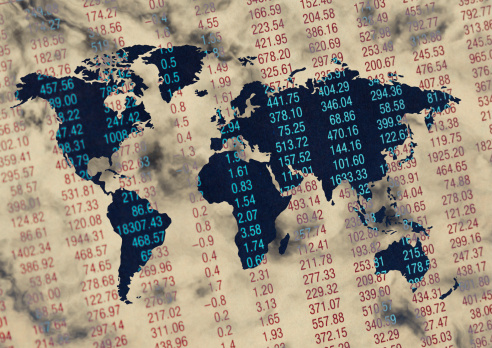Investing
World Bank Cuts Global GDP Forecast to 2.2% for 2013
Published:
Last Updated:
The World Bank has lost confidence in its earlier forecasts about global GDP growth. The organization has cut its outlook for this year from 2.4% to 2.2%. It may be a new reason for an ongoing pull back in stock markets around the world, which have only just begun
The World Bank’s new view also should undermine confidence in the earnings growth of businesses, in particularly large multinationals that depend on either consumer or enterprise activity for their sales. Many of these huge companies already have cut forecasts, in most cases due to worry about Europe. Added to that concern should be the slowing rates of GDP growth in China. The gross domestic product in the People’s Republic could rise as little as 7% this year. Some analysts believe that number is inflated because of false reporting by the nation and some regional governments.
The Japanese stock market already has entered bear territory due to a series of sickening drops. European markets have started a move that is mostly downward. U.S. markets have followed, and the stock market here has had its largest decline since the start of the year.
The natural extension of global GDP trouble is the halting improvement in the jobless rate in some nations, particularly the United States. A slowing of the large economies it trades with could falter considerably and pose a challenge to job expansion. In the European Union, many nations already face double-digit jobless rates and GDP contractions. These contractions have been accelerated, in the opinions of many economists, by austerity programs that have robbed countries of their ability to strategically spend money on stimulus packages.
It will be no surprise if the World Bank cuts its forecast again before the end of the year.
The world economy appears to be getting back on its feet as risks from advanced economies ease.
Growth in the developing world will remain solid, albeit slower than the frenetic growth rates seen during the pre-crisis boom period, as developing countries grapple with home-grown challenges brought on by capacity constraints in many middle income countries, says the World Bank’s latest Global Economic Prospects, issued today.
Global GDP is expected to expand about 2.2 percent in this year and strengthen to 3.0 percent and 3.3 percent in 2014 and 2015.
Developing-country GDP is now projected to be around 5.1 percent in 2013, strengthening to 5.6 percent and 5.7 percent in 2014 and 2015, respectively, with growth in Brazil, Russia, India and South Africa projected to remain weak. Looking at broader region-wide trends, the East Asia & Pacific region is expected to grow by 7.3 percent this year; Europe & Central Asia by 2.8 percent; Latin America & the Caribbean by 3.3 percent; Middle East & North Africa by 2.5 percent; South Asia by 5.2 percent; and Sub-Saharan Africa by 4.9 percent.
For high-income countries, fiscal consolidation, high unemployment and still weak consumer and business confidence will keep growth this year to a modest 1.2 percent, firming to 2.0 percent in 2014 and 2.3 percent by 2015. Economic contraction in the Euro Area is estimated to be 0.6 percent for 2013, compared with the previous projection of 0.1 percent. Euro Area growth is expected to be a modest 0.9 percent in 2014 and 1.5 percent in 2015.
Global trade, after contracting for several months, is expanding once again, but trade is expected to expand only 4.0 percent in 2013, well off the pre-crisis pace of 7.3 percent. Part of the resilience of global trade, despite the weakness in high-income economies, has been due to rapid expansion in South-South trade. More than 50 percent of developing country exports now go to other developing countries. Even when China is excluded, South-South trade has been growing at an average rate of 17.5 percent a year over the past decade, with manufacturing trade expanding as rapidly as commodities trade.
Credit card companies are at war, handing out free rewards and benefits to win the best customers. A good cash back card can be worth thousands of dollars a year in free money, not to mention other perks like travel, insurance, and access to fancy lounges. See our top picks for the best credit cards today. You won’t want to miss some of these offers.
Flywheel Publishing has partnered with CardRatings for our coverage of credit card products. Flywheel Publishing and CardRatings may receive a commission from card issuers.
Thank you for reading! Have some feedback for us?
Contact the 24/7 Wall St. editorial team.